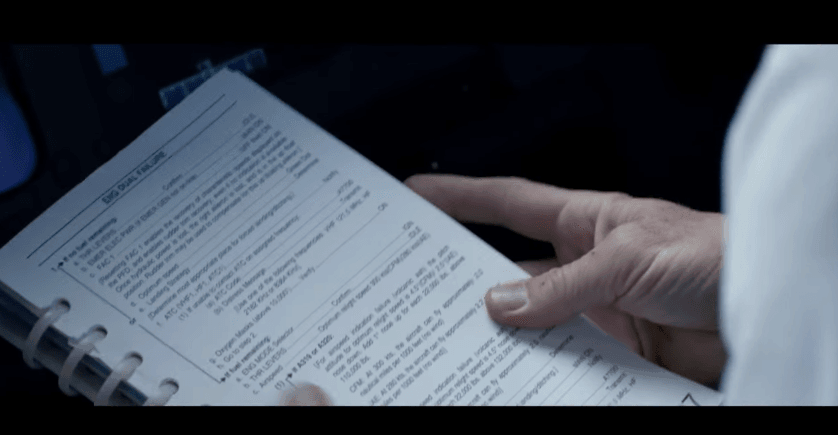OK, it's Tuesday… “Throwback Tuesday.” I'll make that a thing.
Somebody I really appreciated getting to know, before her retirement from healthcare improvement work, was Naida Grunden. She wrote or co-authored two fantastic Lean healthcare books:
The Pittsburgh Way to Efficient Healthcare: Improving Patient Care Using Toyota Based Methods (an early addition to the literature)
Lean-Led Hospital Design: Creating the Efficient Hospital of the Future (listen to my podcast with Naida and her co-author, Charles Hagood)
Knowing Naida, I learned that her husband had been a pilot for US Airways. And…. yes…. they both knew Captain Chesley “Sully” Sullenberger, subject of a new movie that I really want to see, titled “Sully.” And, I didn't want to wait until Thursday to publish this post.
After his retirement from the airline, Sully got involved in the patient safety movement, sharing lessons about the power of process, checklists, communication, and teamwork. Sounds like Lean, right?

Something miraculous, or at least amazing, happened that day.
Sully said he wasn't a hero… he was just doing his job.That humility reminds me of Lean thinking, too. Sully gave a lot of credit to his first officer (co-pilot), Jeff Skiles.
Society loves a hero. The movie isn't called “Sully and Skiles.” Interesting, eh?
I wondered how they could make a movie out of a flight that lasted “208 seconds.” In the trailer, the film's director, Clint Eastwood, talks about how the NTSB was trying to “railroad” Sully to make it seem like he had done the wrong thing (such as not trying to land at Teeterboro Airport). It sounds Sully had doubts about whether he had really made the right call. In response to the film, the NTSB investigators say they aren't happy about being made the villain in the story.
“There was no effort to crucify him or embarrass him,” Malcolm Brenner, an NTSB human behavior specialist who was part of the accident's investigation, told Bloomberg. “If there were questions, it was to learn things.”
…
Sully himself has argued that the film rightly communicates how he felt at the time, under intense media and bureaucratic scrutiny. He told the New York Times that the investigation was “inherently adversarial, with professional reputations absolutely in the balance.”
Looking back at Lean Blog history, Naida wrote a guest post back in 2010 that shared some of Sully's thoughts about a “patient safety revolution.”
From the post (click through to see the detail), Sully called for:
Briefly, the three requirements for a safety revolution are:
1. A national, non-punitive, independent incident reporting system
2. Standardized work, and crew resource management (CRM)
3. Culture change
Have we made much progress in the past six years?
I hope you enjoy the post and the podcast.
If you've seen the movie “Sully,” let me know what you think. I hope to see it soon. Are there lessons in the movie that are applicable to patient safety and Lean?
More Reading:
Here are some other links related to Sully and patient safety:
The patient safety page on Sully's website
Miracle on the Hudson: ‘Sully' Sullenberger takes on new cause: patient safety
Captain Sully: ‘Winging It' Is Not Enough
Videos:
An animation of the flight, with audio of Sullenberger and Skiles talking about post-takeoff checklists before the bird strike and engine failure:
Patient Safety Videos:
Please scroll down (or click) to post a comment. Connect with me on LinkedIn.
Let’s build a culture of continuous improvement and psychological safety—together. If you're a leader aiming for lasting change (not just more projects), I help organizations:
- Engage people at all levels in sustainable improvement
- Shift from fear of mistakes to learning from them
- Apply Lean thinking in practical, people-centered ways
Interested in coaching or a keynote talk? Let’s talk.
Join me for a Lean Healthcare Accelerator Trip to Japan! Learn More










